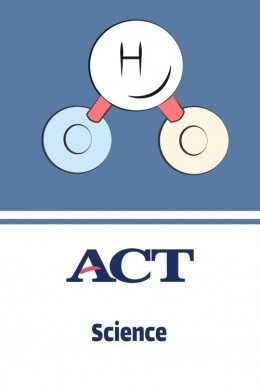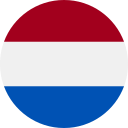Wetenschappen ACT - Geology
Hier leer je enkele Engelse woorden die verband houden met geologie, zoals "mantel", "beving", "smelten", enz. die je zullen helpen je ACT's te halen.
Herzien
Flashcards
Spelling
Quiz

a site where large quantities of rock, stone, or minerals are extracted from the Earth's crust for industrial use or construction purposes

groeve, winplaats
a fracture or zone of fractures between two blocks of rock, along which there has been significant displacement due to tectonic forces

breuk, scheur
solid rock beneath surface materials, forming the Earth's crust foundation

moedergesteente, rotsondergrond
a type of fine-grained sedimentary rock made from compacted clay or mud particles, known for its ability to split into thin layers

leisteen, schalie
a type of dark, fine-grained igneous rock formed from cooled lava, characterized by its dense composition and typically dark gray to black color

basalt
a durable and visually appealing natural rock used for countertops, flooring, and other architectural applications

graniet, granietsteen
a fossilized organism that is useful for dating and correlating the strata in which it is found, typically indicative of a particular time period in Earth's geological history

gidsfossiel, indexfossiel
(geology) the injection of magma into existing rock formations underground

indringing, magmainjectie
a method used to determine the age of rocks and minerals by measuring the decay of radioactive isotopes present in them

radiometrische datering, ouderdomsbepaling met radioactieve isotopen
(of rock) formed from cooled magma or lava

stollings, vulkanisch
related to rocks transformed by intense heat, pressure, or chemical processes, altering their mineral composition and texture

metamorf, metamorfisch
relating to the movement and arrangement of the Earth's crust

tektonisch, betreffende de beweging en opstelling van de aardkorst
to extract metal from its ore by heating and melting it in a furnace

smelten, extraheren door smelten
the byproduct of smelting ore that forms a glass-like material, often found as a residue in mining and metalworking activities

slak, smeltresidu
the period of time from about 252 to 66 million years ago, characterized by the dominance of dinosaurs and the gradual breakup of the supercontinent Pangaea

mesozoïcum, secundair tijdperk
a mineral with a greenish hue, commonly found in igneous rocks like basalt and peridotite, known for its high magnesium and iron content

olivijn, peridoot
a group of minerals found in igneous and metamorphic rocks, typically dark in color and composed of silica, magnesium, and iron

pyroxeen, een groep mineralen die voorkomen in stollings- en metamorfe gesteenten
a group of minerals that are the most abundant components in the Earth's crust, known for their hardness and varied colors, often used in ceramics and glassmaking

veldspaat, veldspaat
a type of rock formed from clay minerals that have been compressed and hardened over time, creating a dense and often smooth-textured material

argilliet, kleisteen
a scientist who studies the Earth's structure, composition, processes, and history, including rocks, minerals, fossils, and geological phenomena

geoloog, wetenschapper gespecialiseerd in geologie
a scientist who specializes in the study of earthquakes and seismic waves, investigating their causes, effects, and patterns

seismoloog, aardbevingsdeskundige
the point on the surface of the earth vertically above the focus of an earthquake where its effects are felt most strongly

epicentrum, centrum
an earthquake caused by underground movement or volcanic activity

aardbeving, beving
the sudden outburst of lava and steam from a volcanic mountain

uitbarsting, vulkanische uitbarsting
a type of broad, gently sloping volcano formed by the eruption of low-viscosity basaltic lava

schildvulkaan, vulkaan schild
a branch of geology that focuses on the study of volcanoes, volcanic activity, and related phenomena

vulkanologie, studie van vulkanen
liquid or semi-liquid rock that exists under the earth's surface with an extremely hot temperature

magma, gesmolten gesteente
a large, basin-shaped volcanic crater formed by the collapse of a volcano after a massive eruption

caldera, vulkaankrater
a tough type of rock that starts as sandstone but changes under intense heat and pressure underground, becoming very hard and durable

kwartsiet, een hard type gesteente dat begint als zandsteen maar verandert onder intense hitte en druk ondergronds
particles of rock, minerals, or organic materials that have been transported by wind, water, or ice, and deposited in layers on the Earth's surface

sediment, afzetting
a visible exposure of rock or geological strata at the Earth's surface, often occurring on hillsides, cliffs, or other elevated areas, providing insight into the underlying geological structure

dagzomend gesteente, rotsopduiking
connected with or produced by the heat inside the earth

geothermisch, aardwarmte-
a large, bowl-shaped depression or low-lying area on the Earth's surface, typically surrounded by higher landforms and often filled with sedimentary deposits

bekken, kom
the thick, buoyant part of the Earth's crust that forms the continents, composed mainly of granitic rocks and less dense than oceanic crust

continentale korst, vastelandskorst
a landmass that existed in the geological past

paleocontinent, oud continent
a geological process where one tectonic plate moves under another and sinks into the Earth's mantle

subductie, onderduiking
the region of the Earth's interior, lying beneath the crust and extending to the outer core, composed of solid rock that can deform and flow over geological time scales

mantel, de aardmantel
a hard gray or white rock that contains calcium and is used for making cement or as a building material

kalksteen, kalk
a soft, white clay mineral formed from the weathering of aluminum-rich rocks, used widely in ceramics, paper production, and as a filler in some medications

kaoliniet, kaolienklei
| Wetenschappen ACT |
|---|